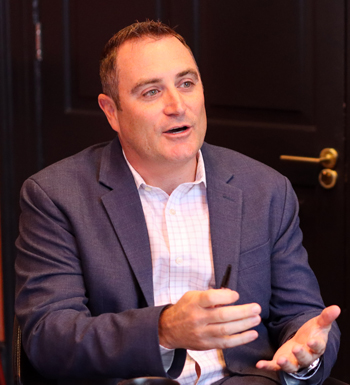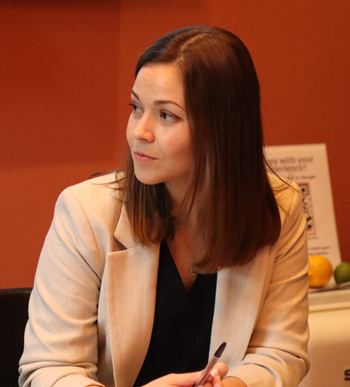Despite misconceptions that it isn’t viable in Ireland, solar is a growing technology. However, the successful delivery of any renewable power requires the right infrastructure.
In Ireland — where, admittedly, the sun can be on the shy side — solar is set to be an increasingly important part of the renewable energy mix.
With the cost of solar panels decreasing, it’s becoming a competitive technology.
Peter Lefroy, Director, RWE Renewables Ireland
Increasing potential for solar success
“It’s relatively early days for solar energy in Ireland, certainly in comparison to wind,” explains Peter Lefroy of RWE Renewables Ireland, leader in renewable power generation. “But we’re now seeing solar projects of 100MW-plus being proposed and developed. With the cost of solar panels decreasing, it’s becoming a competitive technology.” Additionally, the Government’s Renewable Electricity Support Scheme (RESS), has given solar a route to market that previously didn’t exist.
Why solar must be added to the grid

Justin Moran of Wind Energy Ireland — the body representing the Irish wind industry — points out that wind (strongest in the winter months) and solar (strongest in the summer months) complement each other perfectly. “It’s critical to add solar onto the grid,” he says.
“What we need is a mix of technologies that will keep the lights on and the grid stable,” agrees Kevin O’Donovan from Statkraft, Europe’s largest generator of renewable energy. “Solar is critical for the days when the wind doesn’t blow,” he insists.
Potential of solar for homeowners and businesses
“Residents should be encouraged to install solar panels onto their homes because it will make a contribution to their households, help them think differently about energy and get them on board with renewables,” adds Moran. As a bonus, if a home is producing more energy than it is consuming, it can make money by exporting the surplus to the grid.
Yet, a misconception is that solar isn’t viable in Ireland because of the weather,” says Diana Vaz of IMR, Ireland’s centre for manufacturing solutions. “While it’s true that the potential for solar is lower here than in, say, Mediterranean countries, photovoltaics (PVs) harness sunlight — not the heat from the sun. So, PV panels will still be producing electricity on cloudy days. Solar is easy to install and very affordable.”
Businesses now need to follow the example of homeowners and install solar on their buildings, says Liam Faulkner of Strategic Power Connect, which designs and installs on-site renewable energy systems. “Most companies can put PV on their roof reasonably easily,” he says. “However, they’re waiting until they are forced to do it, even though there are plenty of organisations that can help them front the capital cost of solar installation. They’re running out of excuses for not embracing solar.”
Need for better infrastructure to support renewables
However, for renewable energy to have a proper future in Ireland, infrastructure needs to dramatically improve. This includes the grid. “We need more robust grid infrastructure, including power lines, underground cables, substations and additional interconnectors to UK and Europe — on top of what’s been planned already,” insists O’Donovan.
Leveraging private wire solutions

Without a strong electricity grid, power can’t be delivered from the generation sites to the homes and businesses that need it. Private wire — where companies receive energy from a generation source via their own infrastructure, alleviating pressure on the grid — could be a game-changer in this regard.
“If private wire solutions can be leveraged, the hyperscalers (large data centres) are ready to build solar farms,” notes Chris Collins of digital automation and energy management multinational Schneider Electric. “There’s no way we can reach our 2030 targets without private wire,” adds Faulkner. This is a complex regulatory area that has been left alone, he says; it’s something the country and the Government need to get behind.
Strategising renewables infrastructure capacity
Moreover, ‘renewables infrastructure’ is vast and includes everything from connectors to maritime ports, notes Moran. “There is only one port on the island of Ireland — Belfast — that can be a construction base for offshore wind,” he says. “We must find other port infrastructure now. If we don’t, we’ll be part of a large queue using Belfast.”
Future of Energy contributors
Chris Collins, Country President Ireland, Schneider Electric
Kevin O’Donovan, Managing Director, Statkraft Ireland
Peter Lefroy, Director, RWE Renewables Ireland
Justin Moran, Director of External Affairs, Wind Energy Ireland
Liam Faulkner, CEO, Strategic Power Connect
Diana Vaz, Renewable Research Technologist, IMR

